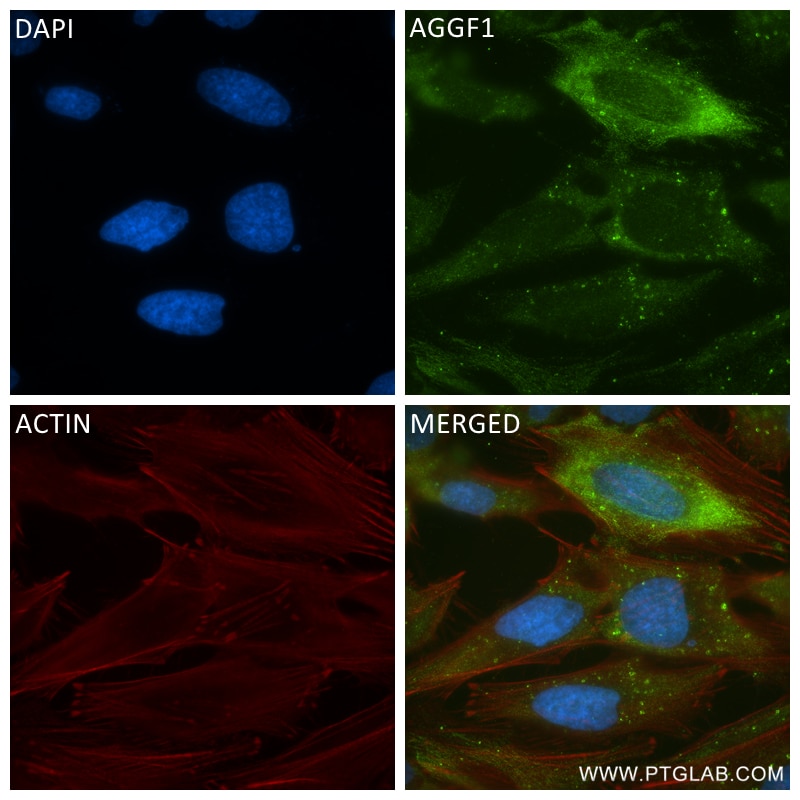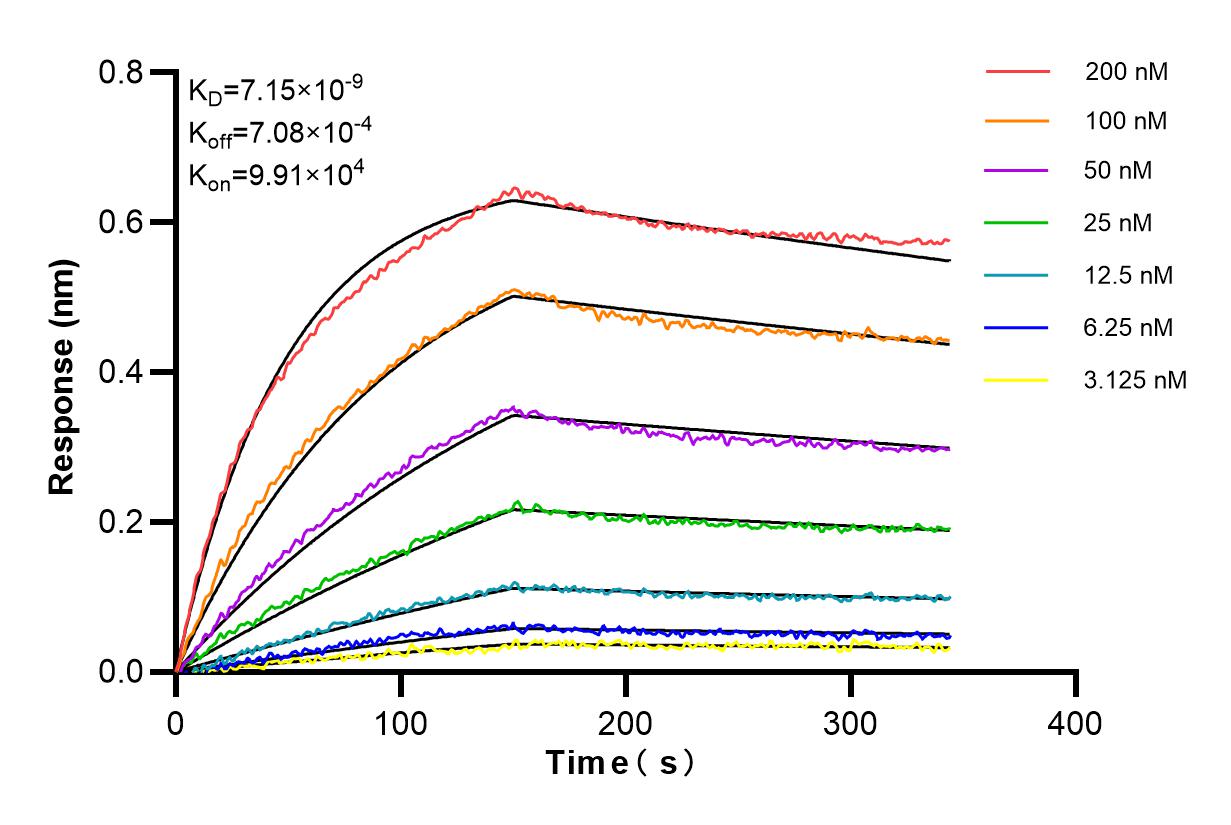Validation Data Gallery
Tested Applications
| Positive IF/ICC detected in | HeLa cells |
Recommended dilution
| Application | Dilution |
|---|---|
| Immunofluorescence (IF)/ICC | IF/ICC : 1:125-1:500 |
| It is recommended that this reagent should be titrated in each testing system to obtain optimal results. | |
| Sample-dependent, Check data in validation data gallery. | |
Product Information
84715-4-RR targets AGGF1 in IF/ICC, ELISA applications and shows reactivity with human samples.
| Tested Reactivity | human |
| Host / Isotype | Rabbit / IgG |
| Class | Recombinant |
| Type | Antibody |
| Immunogen | AGGF1 fusion protein Ag2497 相同性解析による交差性が予測される生物種 |
| Full Name | angiogenic factor with G patch and FHA domains 1 |
| Calculated molecular weight | 714 aa, 81 kDa |
| GenBank accession number | BC029382 |
| Gene Symbol | AGGF1 |
| Gene ID (NCBI) | 55109 |
| Conjugate | Unconjugated |
| Form | Liquid |
| Purification Method | Protein A purfication |
| UNIPROT ID | Q8N302 |
| Storage Buffer | PBS with 0.02% sodium azide and 50% glycerol pH 7.3. |
| Storage Conditions | Store at -20°C. Stable for one year after shipment. Aliquoting is unnecessary for -20oC storage. |
Background Information
The angiogenic factor gene, AGGF1 (or VG5Q), is identified as a candidate susceptibility gene for Klippel-Trenaunay syndrome (KTS) which is a severe congenital disorder characterized by capillary malformations, venous malformations or varicose veins, and hypertrophy of the affected tissues. AGGF1 protein can bind to endothelial cells and promote cell proliferation. AGGF1 shows strong expression in blood vessels and is secreted as vessel formation is initiated. Regulation of AGGF1 by GATA1 may play roles in endothelial cell biology and angiogenesis.
Protocols
| Product Specific Protocols | |
|---|---|
| IF protocol for AGGF1 antibody 84715-4-RR | Download protocol |
| Standard Protocols | |
|---|---|
| Click here to view our Standard Protocols |

